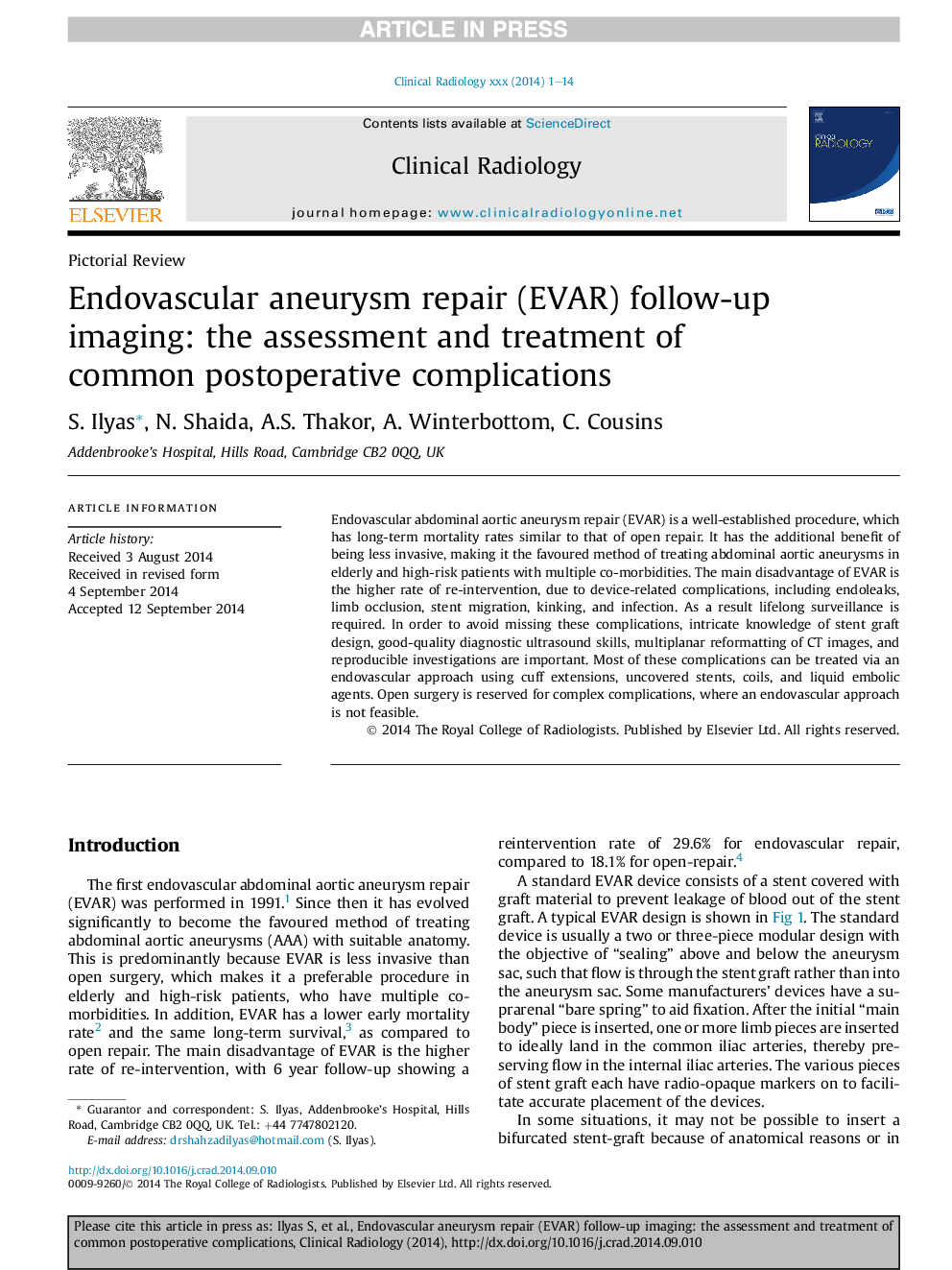| Article ID | Journal | Published Year | Pages | File Type |
|---|---|---|---|---|
| 6190998 | Clinical Radiology | 2015 | 14 Pages |
Abstract
Endovascular abdominal aortic aneurysm repair (EVAR) is a well-established procedure, which has long-term mortality rates similar to that of open repair. It has the additional benefit of being less invasive, making it the favoured method of treating abdominal aortic aneurysms in elderly and high-risk patients with multiple co-morbidities. The main disadvantage of EVAR is the higher rate of re-intervention, due to device-related complications, including endoleaks, limb occlusion, stent migration, kinking, and infection. As a result lifelong surveillance is required. In order to avoid missing these complications, intricate knowledge of stent graft design, good-quality diagnostic ultrasound skills, multiplanar reformatting of CT images, and reproducible investigations are important. Most of these complications can be treated via an endovascular approach using cuff extensions, uncovered stents, coils, and liquid embolic agents. Open surgery is reserved for complex complications, where an endovascular approach is not feasible.
Related Topics
Health Sciences
Medicine and Dentistry
Oncology
Authors
S. Ilyas, N. Shaida, A.S. Thakor, A. Winterbottom, C. Cousins,
